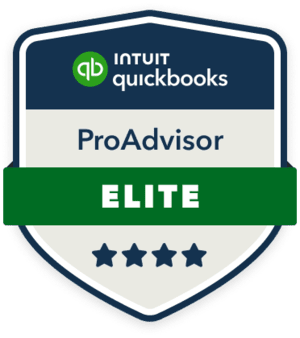At Protea Financial, we understand that the wine industry is a unique blend of artistry and business acumen. While crafting exceptional wines is your passion, managing the financial side of your operation is equally critical.
A significant portion of your winery’s financial health lies in your fixed assets – land, buildings, and equipment. Properly accounting for these assets is crucial for accurate financial reporting, tax compliance, and informed decision-making.
We’re here to guide you through the intricacies of fixed asset accounting, ensuring your winery’s financial foundation is as solid as your finest vintage. Let’s break down the different types of assets you likely already have, as well as some essential information about those assets to help keep your finances in order.
Understanding Fixed Assets in a Winery Context
Fixed assets, also known as property, plant, and equipment (PP&E), are long-term assets that your winery uses to generate revenue. These assets are not intended for resale and typically have a lifespan of more than one year. In the wine industry, these assets often include:
- Land: Vineyards, land for buildings, and any other real estate owned by the winery.
- Buildings: Production facilities, tasting rooms, warehouses, and administrative offices.
- Equipment: Winemaking equipment (crushers, presses, tanks, barrels), bottling lines, vineyard machinery, and vehicles.
Accurate accounting for these assets is vital for several reasons. It allows you to determine the true value of your winery, calculate depreciation for tax purposes, and make informed decisions about capital expenditures.
Initial Recognition and Cost Determination
When acquiring a fixed asset, it’s essential to record its initial cost accurately. This cost includes:
- Purchase Price: The price you paid for the asset.
- Installation Costs: Any costs incurred to get the asset ready for use.
- Transportation Costs: Costs associated with shipping or delivering the asset.
- Legal Fees: Costs related to acquiring the asset, such as title fees or legal counsel.
For example, when purchasing a new bottling line, you would include the purchase price, shipping costs, installation fees, and any necessary modifications to your facility. We’ve seen how meticulously tracking these initial costs can significantly impact your depreciation calculations and overall financial accuracy.
Depreciation: Allocating the Cost Over Time
Depreciation is the process of allocating the cost of a fixed asset over its useful life. Since fixed assets, except for land, gradually lose value over time due to wear and tear or obsolescence, depreciation allows you to recognize this decline in value as an expense, typically over the course of ten years.
Common depreciation methods include:
- Straight-Line Depreciation: This method allocates an equal amount of depreciation expense each year.
- Accelerated Depreciation: Methods like the declining balance method allow for higher depreciation expenses in the early years of an asset’s life.
- Units of Production Depreciation: This method allocates depreciation based on the asset’s actual usage.
Choosing the appropriate depreciation method depends on the nature of the asset and your winery’s accounting policies. For example, winemaking equipment may be depreciated using an accelerated method, while buildings may be depreciated using the straight-line method.
Land: A Unique Fixed Asset
Land is unique among fixed assets because it is not depreciated. Land is considered to have an indefinite useful life, and its value typically appreciates over time. However, any improvements made to the land, such as vineyard development or irrigation systems, are depreciated.
Maintaining Accurate Records
Maintaining accurate records of your fixed assets is crucial for compliance and informed decision-making. This includes:
- Asset Register: A detailed record of each fixed asset, including its acquisition date, cost, depreciation method, and useful life. This register needs regular updates to ensure it’s always accurate.
- Depreciation Schedules: Documents outlining the depreciation expense for each asset over its useful life.
- Maintenance Records: Records of any maintenance or repairs performed on fixed assets.
Regularly updating these records ensures that your financial statements accurately reflect the value of your fixed assets.
Impairment: Recognizing a Decline in Value
In some cases, a fixed asset may experience a significant decline in value, known as impairment. This can occur due to technological obsolescence, changes in market conditions, or damage to the asset. When impairment occurs, the asset’s value must be written down to its fair market value.
Disposing of Fixed Assets
When a fixed asset is sold or disposed of, you must record the transaction in your accounting records. This includes:
- Removing the Asset: Removing the asset from your asset register.
- Calculating Gain or Loss: Determining the difference between the asset’s book value and the sales price.
- Recording the Transaction: Recording the sale or disposal in your accounting records.
Leveraging Technology for Fixed Asset Management
Modern accounting software can simplify fixed asset management by automating depreciation calculations, generating reports, and tracking asset information. Utilizing these tools can significantly improve efficiency and accuracy.
Partnering with Protea Financial for Fixed Asset Expertise
At Protea Financial, we understand the unique challenges wineries face in managing their fixed assets. Our team of financial experts can provide guidance on:
- Selecting appropriate depreciation methods.
- Maintaining accurate fixed asset records.
- Complying with tax regulations.
- Utilizing technology for fixed asset management.
By partnering with us, you can ensure that your winery’s fixed assets are properly accounted for, allowing you to focus on crafting exceptional wines and growing your business. Contact Protea Financial today and see what our team can do to help you.



